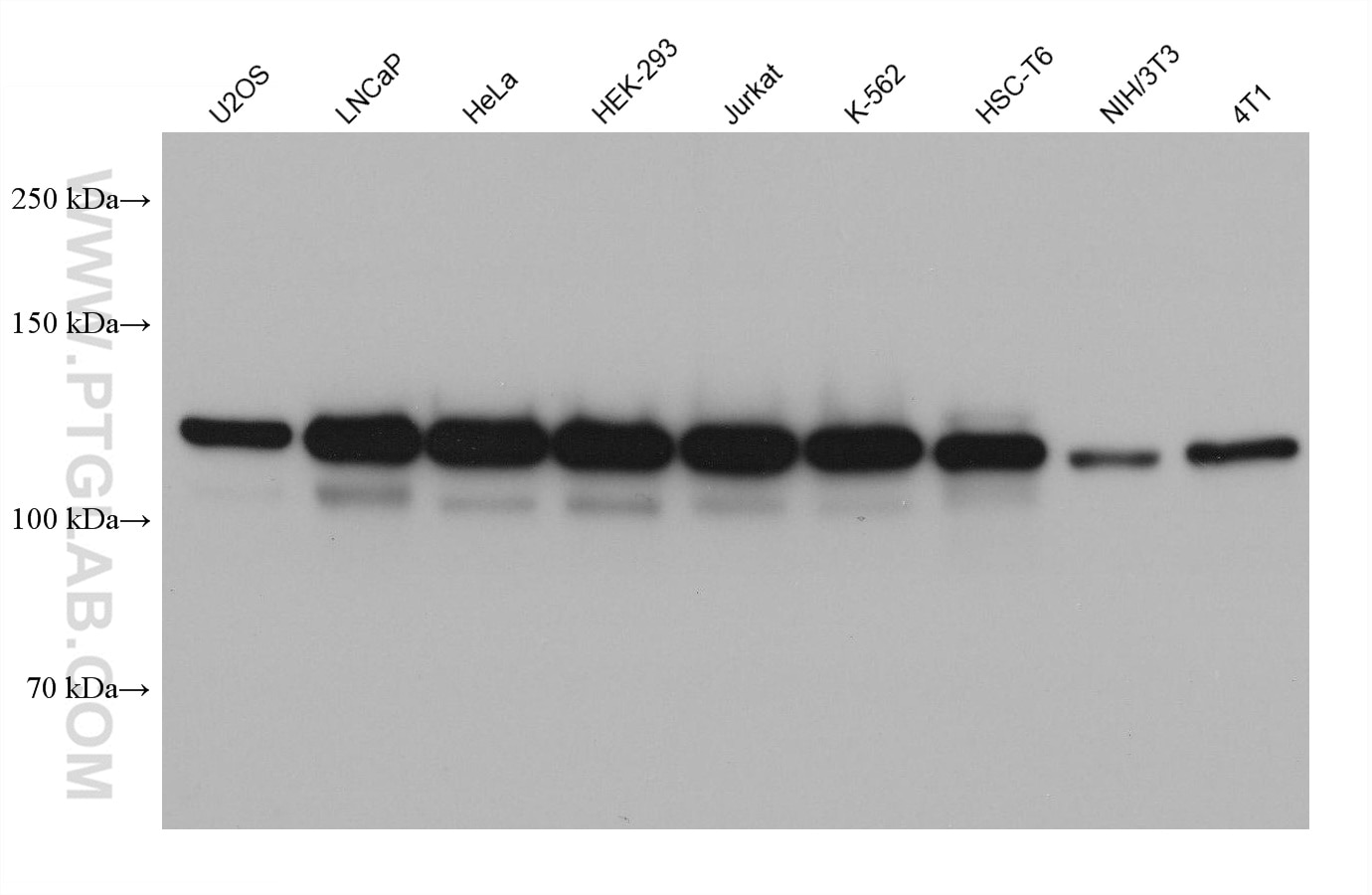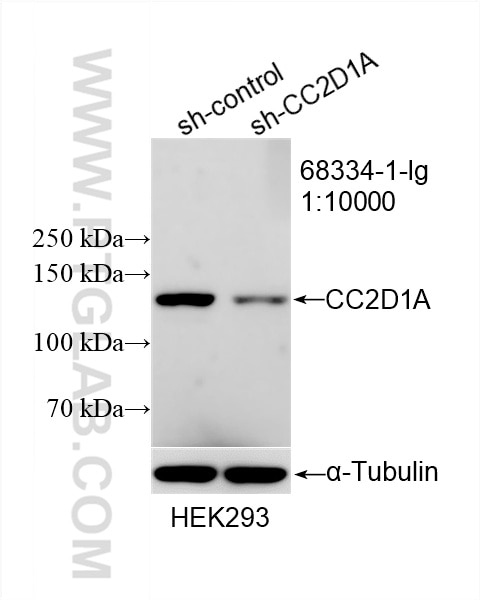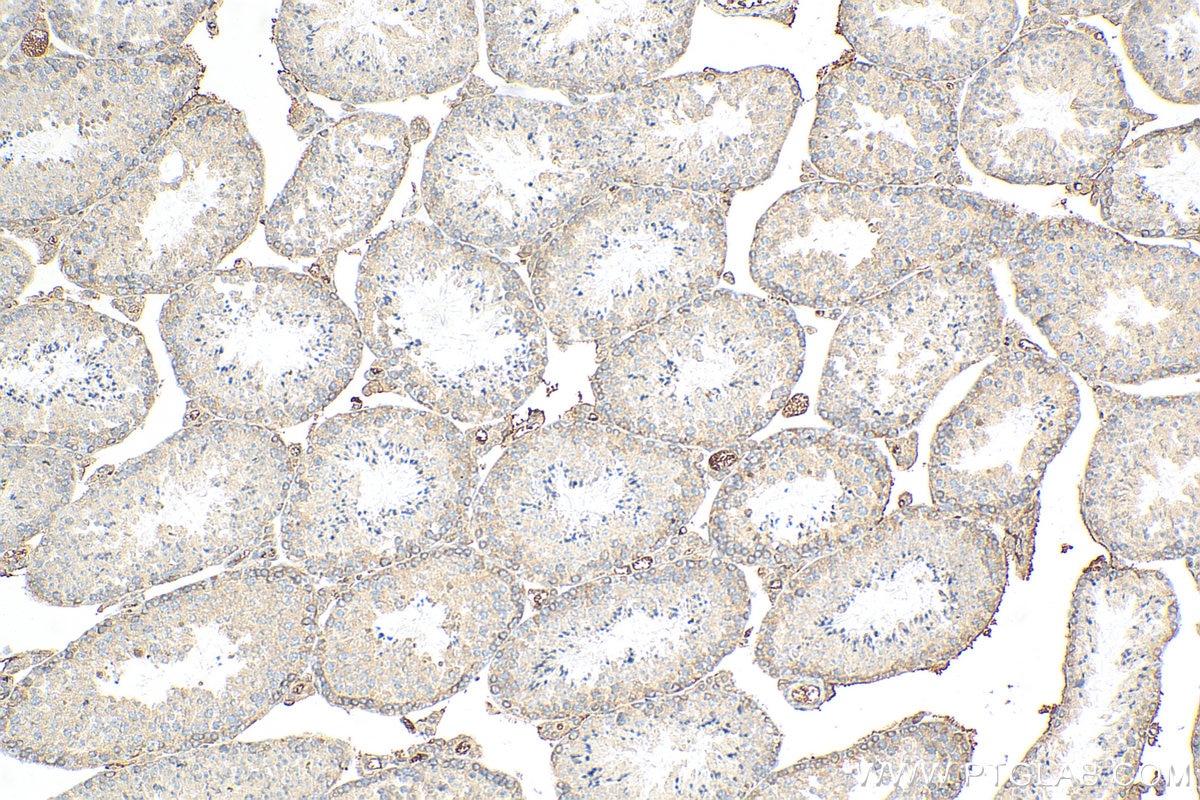- Phare
- Validé par KD/KO
Anticorps Monoclonal anti-CC2D1A
CC2D1A Monoclonal Antibody for WB, IHC, IF/ICC, Indirect ELISA
Hôte / Isotype
Mouse / IgG1
Réactivité testée
Humain, rat, souris
Applications
WB, IHC, IF/ICC, Indirect ELISA
Conjugaison
Non conjugué
CloneNo.
1C11G2
N° de cat : 68334-1-PBS
Synonymes
Galerie de données de validation
Informations sur le produit
68334-1-PBS cible CC2D1A dans les applications de WB, IHC, IF/ICC, Indirect ELISA et montre une réactivité avec des échantillons Humain, rat, souris
| Réactivité | Humain, rat, souris |
| Hôte / Isotype | Mouse / IgG1 |
| Clonalité | Monoclonal |
| Type | Anticorps |
| Immunogène | CC2D1A Protéine recombinante Ag10363 |
| Nom complet | coiled-coil and C2 domain containing 1A |
| Masse moléculaire calculée | 951 aa, 104 kDa |
| Poids moléculaire observé | 130 kDa |
| Numéro d’acquisition GenBank | BC064981 |
| Symbole du gène | CC2D1A |
| Identification du gène (NCBI) | 54862 |
| Conjugaison | Non conjugué |
| Forme | Liquide |
| Méthode de purification | Purification par protéine G |
| Tampon de stockage | PBS only |
| Conditions de stockage | Store at -80°C. 20ul contiennent 0,1% de BSA. |
Informations générales
CC2D1A (coiled-coil and C2 domain-containing 1A), also known as Freud-1, Aki1 or TAPE (TBK1-associated protein in endolysosomes), is a evolutionary conserved protein located in different subcellular compartments, including the nucleus, centrosome, and endolysosomes. It acts as a scaffold protein that interacts with various proteins and plays diverse biological roles. Mutations in CC2D1A have been linked to nonsyndromic mental retardation (NMSR) and generate a truncated 85-kDa product. Several isoforms of CC2D1A proteins have also been described: 120 /130-kDa doublet of long isoform and 67 kDa short isoform. The short isoform of CC2D1A has been identified as the predominant isoform in rodent cells, while the long isoform is more abundant in human cells. Recently it has been reported that CC2D1A/TAPE is the first innate immune regulator implicated in both TLR and RLR signaling at a very early step.









